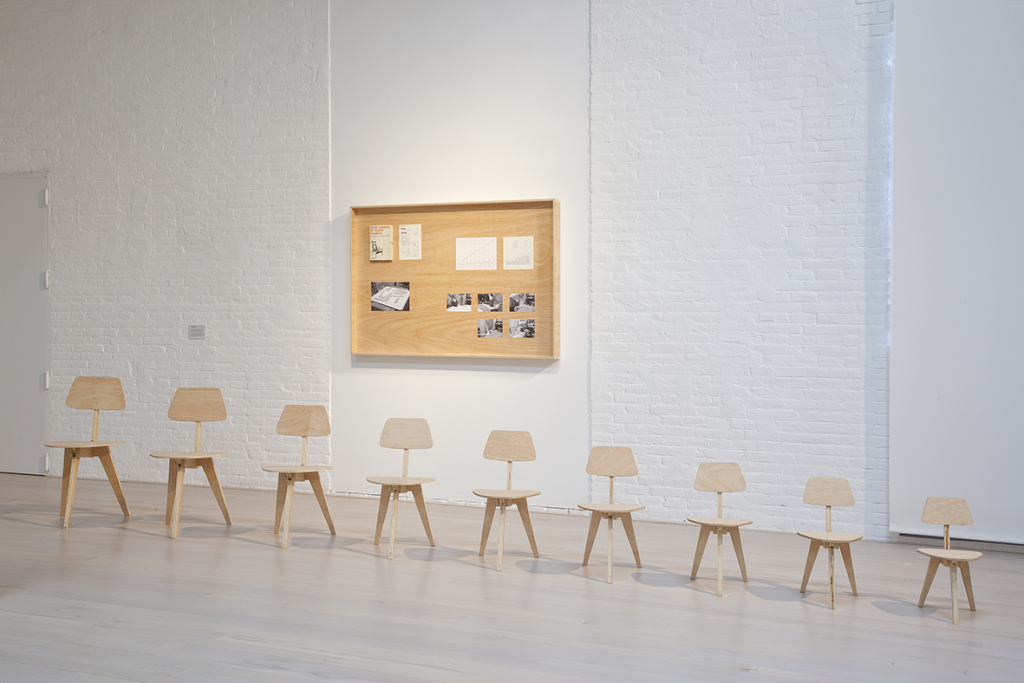Building modern furniture. Antimodulor 2, 2015
Wooden panel with book, photographs and documents.
Nine wooden chairs. Variable measurements.
In the years leading up to the Second World War, Le Corbusier designed the Modulor, an anthropomorphic model of ideal proportions which sought to maintain a harmonious dimension between people, buildings and furniture.
Modulor, an anthropomorphic model of ideal proportions which sought to maintain a harmonious dimension between people, buildings and furniture. Initially, the Modulor was 1.75 m high, but it was modified to 1.83 m. In Le Corbusier’s imagination, beyond the Eurocentric hegemony of the healthy, productive white male, there is no female version of the Modulor, nor is there any ethnic or racial difference (1).
The Antimodulor 2 project reproduces nine times the same chair model that appears in the book Cómo construir el mueble moderno by Mario Del Fabbro (2). But each chair has a different height, so that the lowest chair corresponds to a person who is 1.13 m tall and the highest to a 2.03 m tall person. In this variety of sizes, the only chair that has not been replicated is the one that precisely matches the proportions of the Modulor and which, unsurprisingly, are the same as those on which Del Fabbro based his design.
Antimodulor 2 aims to critically analyse Lecorbuserian standardisation and homogenisation by subverting it to the codes of DIY. A way of doing that frees us from the logic of the machine and emancipates us from the servitude of the market.
(1) The Indian city of Chandigarh, designed by Le Corbusier under the premises of the Modulor, serves as an example of Eurocentric tyranny, since the average height of the Indian man is 1.61m. and of the woman 1.52m.
2) Published massively and uninterruptedly in Spain from the late sixties to the nineties by CEAC Distance learning courses.
________
Exhibition:
Essay on fatigue
Curatorship: Martí Peran.
Fabra i Coats. Barcelona. October 2014 – August 2015.







